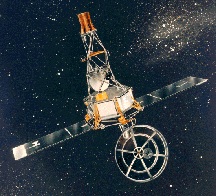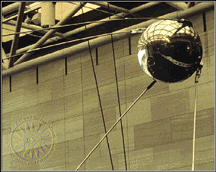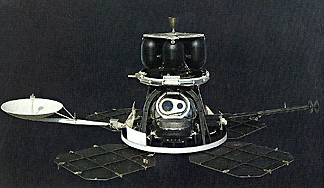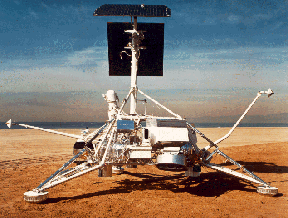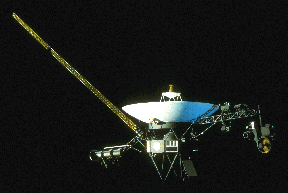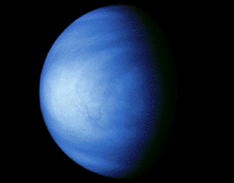Click on image for full size
NASA/JPL
Satellites and Robotic Spacecraft
Satellites and robotic spacecraft are crucial to space exploration. They let us explore space without having to support life, and can travel longer, in more dangerous areas, and at lower risk than manned spacecraft. The first space missions, as well as all the missions beyond the moon, have been by robotic spacecraft.
In 1957, the Soviet Union launched Sputnik 1, the world's first satellite, which was followed by the U.S. satellite, Explorer 1 a year later. For the next few decades, the U.S. space program included Ranger, Lunar Orbiter, and Surveyor to the Moon, Viking to Mars, and Mariner, Voyager, Magellan, Galileo, and Pioneer to Venus and the outer planets. The Soviet Union space program inluded Luna to the Moon and Venera to Venus. By the 1980's, Europe and Japan had joined the space race with unmanned missions to Halley's comet by Sakigake, Suisei, and Giotto.
The 1990's were another successful period for space exploration. The launch of the Hubble Space Telescope started the decade out with a bang! The 1990's also included several spacecraft such as Ulysses and ACE sent to study the Sun specifically.
The NEAR spacecraft landed on the asteroid Eros in February 2001. Deep Space 1 was the first of NASA's New Millennium program to be launched. CONTOUR was going to study two comets, but the spacecraft broke apart and was lost in August 2002 because of a problem with its engine. Cassini, Mars Exploration Rovers (MER), Mars Express, and Stardust are just a few of the other missions currently underway. Canada's first space telescope, MOST, was launched in June 2003 to study pulsating stars. Deep Impact was launched in January 2005 and collided with a comet on July 4, 2005. MESSENGER blasted off in August 2004, and will go into orbit around Mercury in 2011. New Horizons took off in January 2006, and will fly past Pluto in 2015. In December 2006, the European Space Agency launched CoRoT to study pulsating stars and to search for distant worlds. NASA will launch a similar mission called Kepler in February 2009. More upcoming missions, such as Aura and AIM, study Earth's atmosphere, weather, and climate. Phoenix Mars Lander will land near the North Pole of Mars in May 2008. It will use its robotic arm to scoop up soil and to search for water ice. The LRO & LCROSS missions, launched in June 2009, are mapping Earth's Moon and searching for water ice near the Moon's South Pole.


